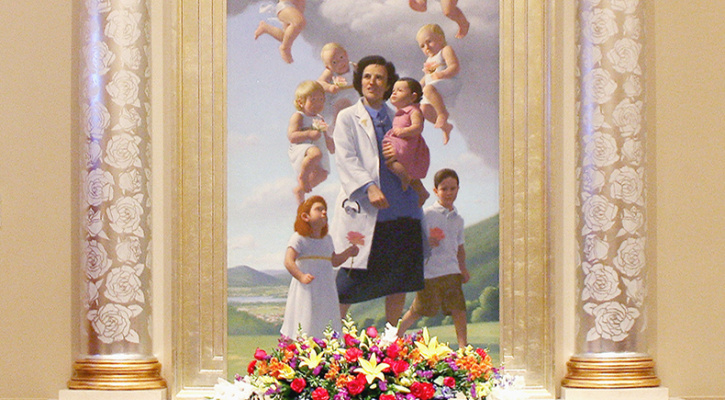So on Fridays during Lent, Catholics may eat shrimp, sea-bass, and lobster, but not steak, spam, chicken, or hot dogs. Why?
Is this distinction completely arbitrary or is there a theological, or even biblical, argument for this rule?
Ray, a reader of this blog, gets to the heart of the question:
We are encouraged [in Belize] to eat fish or seafood on Fridays. The odd thing is that seafood is more expensive than say chicken, so I wonder whether it is really sensible to have fish or seafood which would really be even more luxurious fare than the normal chicken or beef. Shouldn’t the spirit of abstinence necessitate that any sort of luxury food be given up? Also, why would warm-blooded creatures be restricted in the first place?
Could you perhaps give an explanation of the restrictions on the blog? I know you are well versed in this area and expect, should you be able to give one, a response that will be comprehensive.
With grateful appreciation,
Ray
This is a great question, Ray. Especially considering the cost of seafood as compared to lunch meats.
Saint Thomas Aquinas gives two theological reasons for the prohibition against meatin Lent.
1) First, Christ offered his flesh for our us on the wood of the cross. Since Christ gave us his flesh, we also give up flesh meat.
2) Saint Thomas’ second reason for “no meat” requires a bit more explanation. Here is Thomas in his own words:
Fasting was instituted by the Church in order to bridle the concupiscences of the flesh, which regard pleasures of touch in connection with food and sex. Wherefore the Church forbade those who fast to partake of those foods which both afford most pleasure to the palate, and besides are a very great incentive to lust.
Such are the flesh of animals that take their rest on the earth, and of those that breathe the air and their products, such as milk from those that walk on the earth, and eggs from birds. For, since such like animals are more like man in body, they afford greater pleasure as food, and greater nourishment to the human body, so that from their consumption there results a greater surplus available for seminal matter, which when abundant becomes a great incentive to lust. Hence the Church has bidden those who fast to abstain especially from these foods.
So hot blooded animal foods generally provide more pleasure than cold blooded animal foods. Saint Thomas associates pleasure from food to pleasure from sex.
Our food intake, teaches Thomas, effects our libido.
I bet you’re weren’t expecting that answer! And there is science to back it up. Higher testosterone leads to a higher libido. It’s scientific fact.
Guys, do you want to increase your testosterone, eat more red meat and fatty meats. Same goes for women. Harvard Medical School found that women can increase their fertility responsiveness by increasing protein intake and switching to full-fat milk.
Want to decrease your testosterone? Eat more salad, soy, sugar, simple carbs, veggies, and lean fish. Cut out red meat and dairy.
Remember that Thomas Aquinas sat under the teaching of Albert the Great – Europe’s premier biologist. It may sound medieval, but they were on to something back then. They knew that human fertility (and sexual concupiscence) was related to the consumption of animal products.
Is it any accident that the terms like:
-
red-blooded
-
hot-blooded
-
stud
-
bull
-
red meat
-
muscular
-
meaty
-
braun (originally meaning “meat” or “roast”)







